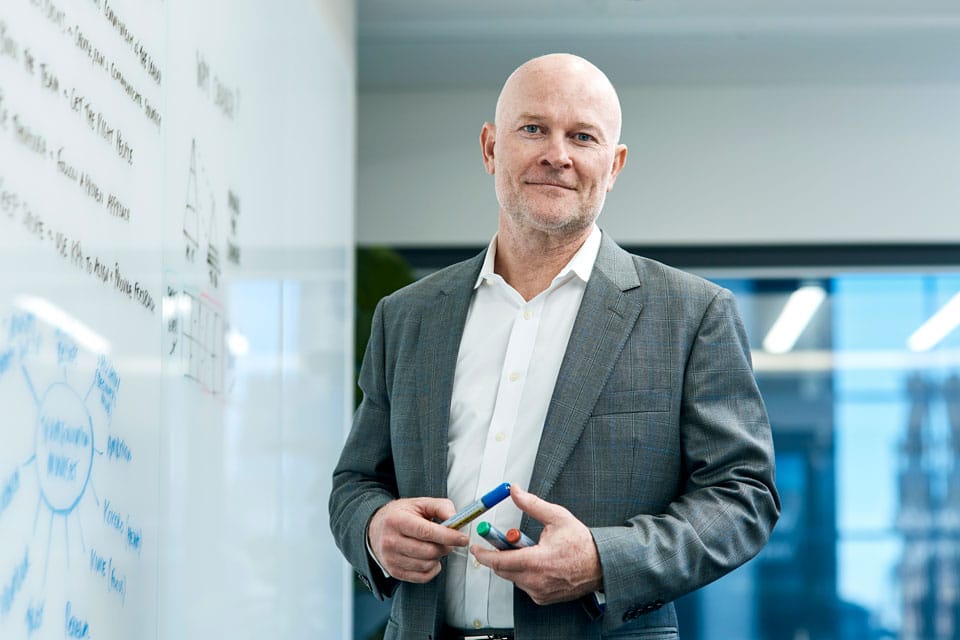Why sticking with ‘it’s how we do things is a recipe for disaster

My observation over three decades working as a CEO, big-4 bank CIO, and management consultant is that most organizations have a strong inbuilt default to maintaining their traditional ways of doing things.
This isn’t surprising because I imagine we’ve all heard stories about how difficult it is to truly transform an established organization, and like me, you’ve probably also seen ambitious programs start enthusiastically, and then over time fail to build momentum, or slowly die on the vine.
There’s a simple reason for this embodied in Year 7 physics. Sir Isaac Newton’s 1st law of motion dictates how the universe (including our organisations) actually works, and his law states that: a body organisation continues in its state of rest, or in uniform motion in a straight line, unless a force transformation project acts on it.
In broad terms, this means that nothing happens unless action is taken, otherwise the status quo remains in place. In fact, the status quo is the only option that never has to argue its own case: it just continues to plod along building mass, adding a little weight and complexity each year, just like the rings of a tree.
The need to change is accelerating
This status quo bias is becoming increasingly dangerous as the pace of change in our world accelerates. We’ve not yet reached ‘peak change’ and forces such as artificial intelligence, geo-politics, population growth and technology change will continue to pressure the business models of our companies.
Sticking with “it’s how we do things” is the opposite of adaptation and healthy evolution. All companies must confront the harsh reality that their own way of doing things, while (maybe) relevant today, will inevitably be pressured by changing circumstances, new competitors and more innovative methods.
Let me elaborate.
Imagine its Friday 19th October 2001 and you’re the divisional head for the Sony Walkman. You’re sitting in your office in a Tokyo high-rise – a decent office I assume given the success your core product has enjoyed since it evolved from its earliest days, through its subsequent incarnations of cool yellow waterproof device, and then the Discman that let you play your CDs on the run. You’re ready for the weekend, not realising that within days, your most cherished product will be obsolete.
Because on Tuesday 23rd October 2001, Apple launches its iPod.
We all know what happened next. Apple’s new device blew the Walkman out of the water, and Sony has never recovered its previous leadership in personal music players. And what’s most surprising is that Sony itself had all the ingredients for the iPod internally within its own company. It had the solid state electronics, the screen technology, and even a world class stable of musicians and entertainers to provide content. It just hadn’t challenged its own mindsets, and its long held ways of doing things.
There are many similar corporate disaster stories such as Blockbuster, Nokia, and Kodak – all of which were full of very smart, motivated and well rewarded people – who were unable to successfully challenge how they’d always done things, and as a result their organisations fell behind or failed entirely.
The price of focus is loss of peripheral vision
The price of focusing only on your internal operations, and how you already do things is loss of peripheral vision for what’s happening on the outside. Its therefore critical that you keep an eye on the world around you. You must be continually sensitive to disruption, understand what’s happening in your own and adjacent markets, and be able to craft coherent and pro-active strategy in response.
This is what business has always been about.
And as you put the finishing touches on your strategy, don’t forget that the status quo is patiently plodding along, oblivious to the discussions, excitement and enthusiasm for a new way of doing things. Identifying disruption and crafting world class strategy is not enough. You must be able to implement, and get your strategy done.
As the leader of transformation, you must understand the mechanics for successful change. You must personally do the work. You must choose, own and communicate a clear strategy. You must build the team around you with the right skills and temperament to stay the course. You must take a thorough approach that moves multiple ‘levers of change’ including your products and services, customers and markets. You must be prepared to change your business processes, technologies, organisation structures, facilities and people, and anything else required to be successful. You must also keep score with a balanced set of KPIs that demonstrate actual progress.
The old adage that ‘not all change is progress, but all progress comes from change’ has always been true, and with our increasingly fast paced environments it’s even more relevant now. As a custodian of your organisation, its imperative that you’re ready to assertively challenge the status quo in a rational, unsentimental and enthusiastic manner, and be prepared to make the changes required for continued success.
Sticking with “it’s how we do things” is truly a recipe for disaster.
Written by Adam Bennett.
Have you read?
Ranking: Richest Golfers in the World, 2023.
These Largest Cities Will Face Extreme Climate Change Threats.
These All-American Football Movies Inspired CEOs and Management Consultants The Most.
These Are Most Disliked Companies in America, 2023.
Report: Countries That Attract the Most International Migrants.
Add CEOWORLD magazine to your Google News feed.
Follow CEOWORLD magazine headlines on: Google News, LinkedIn, Twitter, and Facebook.
Copyright 2024 The CEOWORLD magazine. All rights reserved. This material (and any extract from it) must not be copied, redistributed or placed on any website, without CEOWORLD magazine' prior written consent. For media queries, please contact: info@ceoworld.biz








